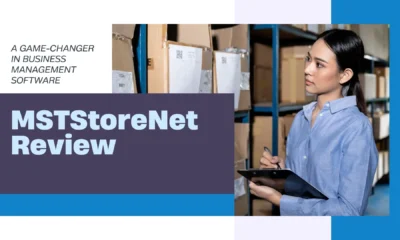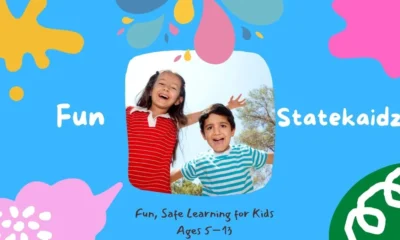TIPS
Fostering a Safer Workplace: Proven Strategies to Prevent Sexual Harassment

Introduction
A workplace should be a secure environment where everyone can thrive professionally and personally. Sexual harassment undermines this foundation, affecting morale, productivity, and general well-being. Fostering a safer workplace not only protects individuals but also strengthens the organization. This article will discuss proven strategies for preventing sexual harassment, including establishing comprehensive policies, providing practical education and training, implementing accessible reporting systems, promoting accountability, ensuring compliance with laws, and consistently monitoring progress.
Establishing Clear Policies
Building a safer workplace begins with creating clear, comprehensive, and accessible anti-harassment policies. These documents should define prohibited behaviors in detail, provide straightforward examples, and outline procedures for addressing incidents. Every employee, regardless of seniority or role, should understand the standards of conduct. Policies need to be available in accessible language, ensuring everyone comprehends their rights and responsibilities.
Policies should also address multiple aspects, including confidentiality, non-retaliation clauses, and guidance for all parties involved. Regular reviews and updates are crucial, allowing organizations to keep pace with legal requirements and societal expectations. Involving staff in policy dissemination through meetings or dedicated communication channels ensures a shared understanding. By making these policies visible and integral to workplace practice, organizations lay the groundwork for a respectful and safe culture.
Education and Training for All
Education is a vital component in preventing sexual harassment. Well-designed training programs help employees recognize, understand, and prevent such behaviors. Participating in educational sessions makes staff aware of the definitions, consequences, and reporting procedures for sexual harassment. This knowledge empowers employees to prevent inappropriate conduct or support colleagues confidently.
Utilizing online training platforms can further enhance accessibility and engagement. These digital programs allow employees to receive high-quality information regardless of location or schedule. Interactive modules, quizzes, and scenario-based learning can make the material more relatable and easier to retain. Regularly scheduled refresher courses keep knowledge current and reinforce organizational expectations. Thorough education creates a consistent, informed workforce prepared to respond to and prevent incidents of harassment.
Creating Effective Reporting Systems
A critical element in preventing workplace harassment is ensuring that reporting procedures are safe, confidential, and straightforward. Employees must have multiple channels for reporting incidents, whether through anonymous web forms, hotlines, or speaking directly to a designated staff member. All avenues should be free from barriers, easy to use, and well-publicized within the organization.
Confidentiality should be stressed at every step, helping employees feel more comfortable coming forward. Organizations can also designate neutral personnel, such as ombudspersons or HR representatives, to receive and investigate reports. Clear protocols ensure all parties know what to expect, from initial contact through resolution. Awareness campaigns, regular reminders about these systems, and assurances of non-retaliation are essential in encouraging their use. When reporting systems are trusted, employees are more likely to take an active role in creating a work environment.
Ensuring Accountability
Accountability at every organizational level is essential to effective prevention. All employees—leaders and staff alike—should be held to the same standards through documented expectations and consequences. When actions are taken quickly and transparently following a report, the organization reinforces its stance against harassment.
Consistency is key. Discipline or corrective measures must follow established protocols and be part of a transparent process. Supervisors should receive guidance on how to address misconduct without hesitation or bias. Regular communication about disciplinary actions taken (without compromising privacy) builds employee confidence in leadership’s dedication. Reinforcing accountability through recognizing positive behavior also shapes culture, creating a workplace where mutual respect is the norm.
Monitoring and Improving Strategies
Preventing sexual harassment requires continuous improvement supported by regular assessment. Organizations should collect feedback through confidential employee surveys, regular check-ins, and suggestion mechanisms to gauge workplace climate. Analyzing this feedback helps assess whether current strategies are effective or need adjustment.
Tracking reports, monitoring the resolution process, and reviewing policy updates are vital steps in this evaluation. Data collected should be reviewed respectfully and used to make data-driven decisions about training needs or policy revisions. Leaders should communicate results, celebrate areas of progress, and outline specific plans for ongoing enhancement. By committing to regular review and adaptation, employers demonstrate a proactive approach and strengthen team trust.
Legal and Regulatory Compliance
Maintaining compliance with local, state, and federal laws is a non-negotiable aspect of workplace safety. Laws and regulations can determine policy requirements, reporting obligations, and corrective action procedures. Employers’ procedures should ensure that their policies align with all relevant legal guidelines and that leadership stays updated on legislative changes that may impact the workplace.
Organizations should regularly include compliance training in employee education. Accessible legal resources, regular consultations with legal experts, and the systematic view of policies and incident protocols all contribute to minimizing risk and supporting being. Adhering to legal standards protects the organization from liability and fosters a culture where employees know they are supported and valued.
Conclusion
Fostering a safer workplace begins with a commitment to respect, safety, and equity for every team member. By constructing clear, accessible policies, providing comprehensive education, implementing supportive reporting mechanisms, ensuring accountability, monitoring performance, and rigorously adhering to legal standards, organizations can significantly reduce the risk of sexual harassment. A workplace where these strategies are prioritized is not just protected from liability—it is one where employees are empowered, productive, and engaged, contributing to a thriving environment for all. Prevention, protection, and ongoing improvement are continuous processes that benefit everyone within the organization and set the standard for excellence and safety at work.
-

 BIOGRAPHY7 months ago
BIOGRAPHY7 months agoBehind the Scenes with Sandra Orlow: An Exclusive Interview
-

 HOME1 year ago
HOME1 year agoDiscovering Insights: A Deep Dive into the //vital-mag.net blog
-

 HOME1 year ago
HOME1 year agoSifangds in Action: Real-Life Applications and Success Stories
-

 BIOGRAPHY1 year ago
BIOGRAPHY1 year agoThe Woman Behind the Comedian: Meet Andrew Santino Wife




























